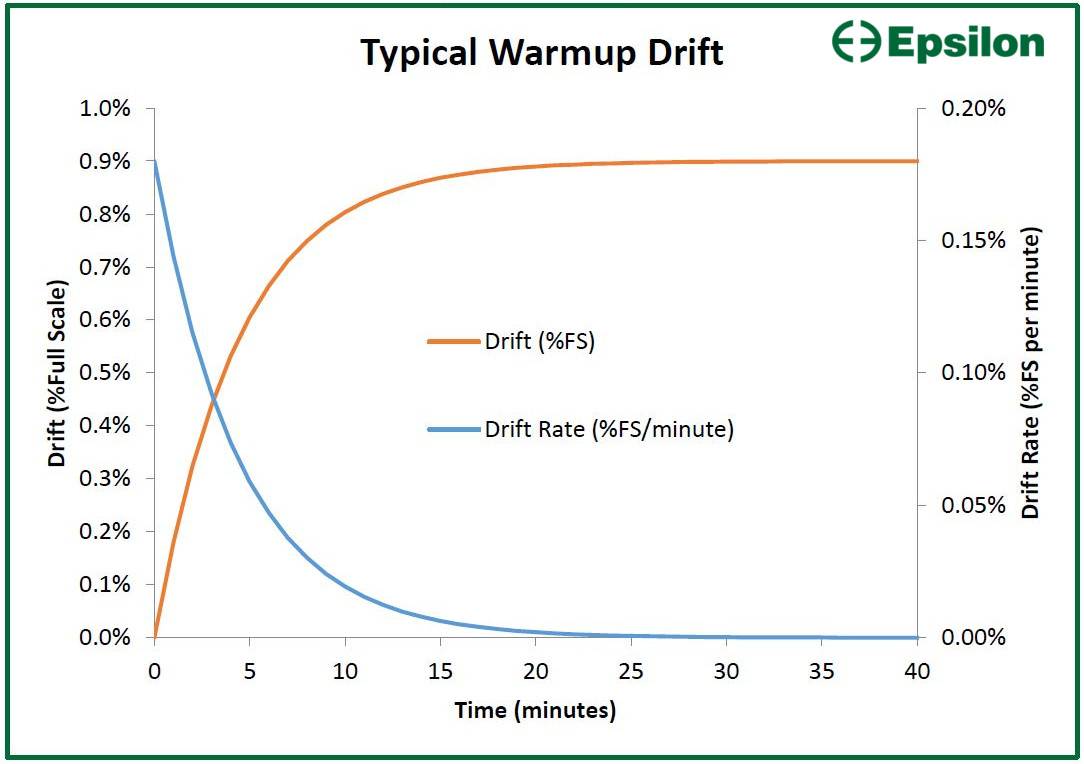
Understanding Warmup Drift
Overview
Measurement drift is a phenomenon common to all extensometers, as well as other types of sensors and electronic devices generally. There are several common sources of drift that affect strain measurement. Warmup drift, thermal drift, and cyclic drift are the most common sources. This article addresses warmup drift.
Warmup Drift
When electronic devices are first powered on or plugged in, the flow of current generates heat. In the case of load cells, extensometers, or other sensor systems, this heat typically produces a small offset in the reading which changes over time. As the temperature of the sensor stabilizes, so does the reading, so warmup drift typically stabilizes sufficiently after a few minutes. For strain-gaged extensometers, warmup drift is affected by excitation voltage and room temperature.
When performing typical tests of short duration (a few seconds), drift is usually negligible. When performing longer tests which may last several minutes or more, it is important to account for warmup drift by allowing the entire system to stabilize before beginning a test. The example below shows a typical warmup drift profile, although this varies for each device and may be much smaller.

Example 2: A creep test lasting 10 minutes is performed after allowing the system to warm up for 10 minutes. The test elongation is 1.0% of sensor full scale, and drift during the test is 0.1% of sensor full scale. The measurement error is significant: 0.1%FS / 1%FS = 10% of reading.
Mitigating Warmup Drift
Warmup Drift is easily handled by simply allowing all electronics to achieve thermal equilibrium before use. In most applications, allowing 20-30 minutes for all electronics (including extensometers and load cells) to stabilize after connecting them and powering on before use or calibration is sufficient.
Identifying Warmup Drift
Warmup Drift is distinguished from other sources of measurement drift by the fact that Warmup Drift occurs immediately when a sensor is plugged in and stabilizes after a short time following connection. It is not correlated to room temperature or test profile and will occur even with an extensometer mounted onto a stable unloaded specimen.
Products and Services from Epsilon Tech
Repairs/Service
If your unit is in need of service, calibration or repair, initiate the RMA process with us and we will be happy to assist.
Get Our Newsletter
Sign up for our newsletter to get the most up-to-date information on products and services.
Download Catalog
Our 2022 Extensometer Catalog, Version 110 is now available! Not finding something you’re looking for? Ask us about a custom quote.

